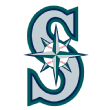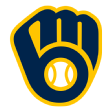Which MLB players were cut loose or traded on non-tender night?

Non-tender night has become an increasingly interesting spot on the baseball calendar, as teams increasingly decline to offer contracts to viable and sometimes quite productive major league players who are not so productive that their current teams are willing to pay them what they might earn via the arbitration process.
The Baltimore Orioles put second baseman Jonathan Villar on waivers last week, even though he was coming off a season in which he hit .274/.339/.453 with 40 stolen bases. The Orioles finally found a trade partner Monday, as the Miami Marlins sent them a minor league pitcher, but mostly the Marlins will absorb Villar's projected $9.75 million salary. The Marlins also acquired first baseman Jesus Aguilar from the Tampa Bay Rays, who was available for the same salary-driven reasons. The Marlins ranked 25th in wOBA at first base in 2019 and dead last at second base, so they just became a better team, adding a 4.0 WAR second baseman and a 2018 All-Star first baseman.
In fact, maybe the Marlins should scroll through the list of Monday's non-tenders to build an entirely new lineup. Thanks to revenue sharing and TV money, the Marlins can afford these guys and roll the dice. Heck, being terrible enough to snap up some intriguing talent is perhaps a good way of exploiting the sabermetric mindset of the "smart" teams.
Addison Russell was the biggest name cut loose, with theChicago Cubsissuing a statement that Russell's projected role for 2020 was "inconsistent with how he would have been treated in the salary arbitration process." With Javier Baez entrenched at shortstop, David Bote a capable reserve in the infield and prospect Nico Hoerner having impressed in September, the Cubs didn't need Russell and will save an estimated $4.5 million in salary.
Russell is now a free agent. He is more attractive than some non-tenders because he has two years of team control remaining, and because the Marlins non-tendered shortstop JT Riddle, Miami is a possible landing spot for Russell. Of course, Russell comes with baggage that some teams will wish to avoid after drawing a suspension in 2018 for violating the league's domestic abuse policy. His bat also has regressed after a promising 2016 season in which he hit 21 home runs and knocked in 95 runs as the shortstop for the World Series champion Cubs. His defensive metrics, however, remain above average.
Besides the Marlins, the Orioles are a possibility. Or maybe theCincinnati Reds, who have Freddy Galvis hanging around but could use an elite shortstop sandwiched between Eugenio Suarez and Mike Moustakas in their infield. Plus, Russell's warning track power could work well at Great American Ball Park.
Here are some of the other compelling non-tenders, with projected salaries via Cot's Baseball Contracts:
RHP Blake Treinen (Oakland Athletics)
Projected salary: $8 million
Why he was non-tendered: After posting a 0.78 ERA and 38 saves in 2018, Treinen couldn't find the same consistency with that darting power sinker and posted a 4.91 ERA with 5.7 walks per nine in 2019.
Possible landing spot: Treinen was drafted by the A's, traded to the Nationals and traded back to the A's. How about a return to Washington, where he can get the chance to beSean Doolittle's setup guy?
1B C.J. Cron (Minnesota Twins)
Projected salary: $6.9 million
Why he was non-tendered: Cron mashed 55 home runs the past two seasons; he was waived by the Rays last offseason, and now he has been non-tendered. He has power but doesn't walk and is a mediocre defender, making him a below-average regular at first base.
Possible landing spot: The Rangers were 29th in wOBA at first base, as rookie Ronald Guzman was overmatched. The White Sox could use a DH. The Royals are in rebuilding mode, but they had the worst first-base numbers in the majors last season.
CF Kevin Pillar (San Francisco Giants)
Projected salary: $9.25 million
Why he was non-tendered: Funny, Pillar actually received one 10th-place spot in the MVP voting, the same as Max Scherzer. I guess the Giants don't think he was as valuable as Max Scherzer. Pillar hit 21 home runs but somehow walked just 18 times in 162 games, giving him a .293 OBP.
Possible landing spot: Pillar's defensive metrics have slipped from their peak in 2015-17 with Toronto, but he is at least average in center field, and he isn't a complete zero at the plate. The Rockies, last in the majors in DRS in center field, could use Pillar's glove, as could the Mets. The A's could play Pillar in center and shift rifle-armed Ramon Laureano to right field.
RHP Kevin Gausman (Cincinnati Reds)
Projected salary: $11 million
Why he was non-tendered: That's big change to pay a pitcher who put up a 5.72 ERA in 2019. The Reds like their rotation with Luis Castillo, Sonny Gray, Trevor Bauer,Anthony DeSclafaniand Tyler Mahle.
Possible landing spot: Gausman averaged 3.1 WAR from 2016 to 2018, so he might be able to find a two-year contract if his medicals check out. His strikeout-to-walk ratio was very good in 2019, so he isn't completely broken. This has Angels written all over it. Or Rangers. Or maybe the Twins, who have to replace Kyle Gibson and Michael Pineda in the rotation.
Infielders Cesar Hernandez and Maikel Franco (Philadelphia Phillies)
Projected salaries: $10.5 million and $5.75 million
Why they were non-tendered: The anticipation that there are better options out there in free agency, most likely, such as Josh Donaldson or Anthony Rendon to play third base and Didi Gregorius to play shortstop (with Jean Segura sliding to second base).
Possible landing spots: Hernandez, originally signed by the Phillies back in 2006, is a solid player who has averaged 2.5 WAR the past four seasons and at the right price could land on a contender -- such as the Indians, Red Sox or A's (who just traded Jurickson Profar to San Diego). Franco? Meh. How about a spring training invite from the Tigers?
OF Domingo Santana (Seattle Mariners)
Projected salary: $3.75 million
Why he was non-tendered: Have you watched him play the outfield?
Possible landing spot: Santana hit 30 home runs for the Brewers in 2017 and hit well for a few months last season before slumping in the second half. The worst-hitting outfield belonged to ... the Marlins!
3B Travis Shaw and RHP Jimmy Nelson (Milwaukee Brewers)
Projected salaries: $4.75 million and $3.7 million
Why they were non-tendered: Shaw hit .157 after back-to-back 30-homer seasons. Nelson hasn't been able to work his way back to form after that 2017 shoulder injury.
Possible landing spots: I could see the Brewers bringing Nelson back, maybe with a lower 2020 salary and a second-year option based on his health in 2020. Shaw averaged 4.0 WAR in 2017 and 2018 and could get an opportunity with a team such as the Angels or Rangers, who need a third baseman (depending on how the winter plays out).
RHP Taijuan Walker and OF Steven Souza Jr. (Arizona Diamondbacks)
Projected salaries: $5.025 million and $4.2 million
Why they were non-tendered: Walker has pitched 14 innings the past two seasons after Tommy John surgery, and Souza missed all of 2019 after knee surgery.
Possible landing spots: Anywhere. Walker could be a good buy-low candidate for a team just looking to fill its rotation, including the Mariners, Orioles and Rockies. (I would advise somebody trying to rebuild their career to choose sea level.)
RHP Aaron Sanchez (Houston Astros)
Projected salary: $5.6 million
Why he was non-tendered: Staying healthy has been a consistent problem for Sanchez, who has managed to throw 30 starts in just one major league season: his breakthrough 2016 campaign. Even his brief stint with the Astros after a deadline deal with Toronto was abbreviated by injury, as he had to be shut down after four starts and had season-ending shoulder surgery in September.
Possible landing spot: Depending on his recovery timeline, which will keep him shelved into the start of the 2020 season, Sanchez might have to settle for a one-year-plus-team-option deal in which his recovery and performance in a low-end first year of the deal could earn him bigger money in 2021. A return to Houston might be in his best interest if the Astros can help him get back to where he was in 2016.













